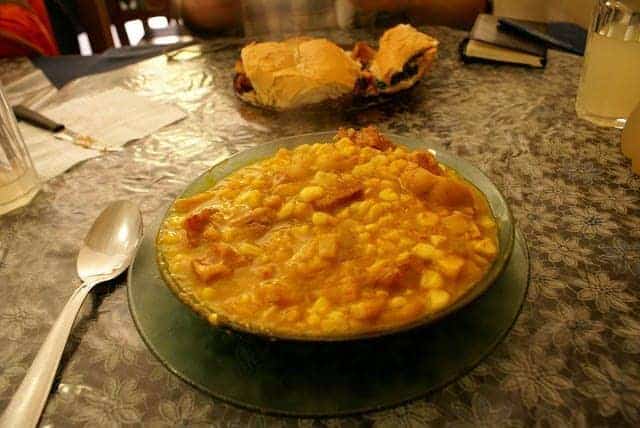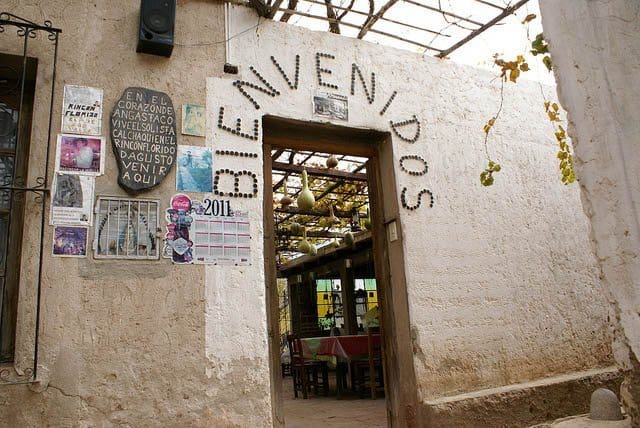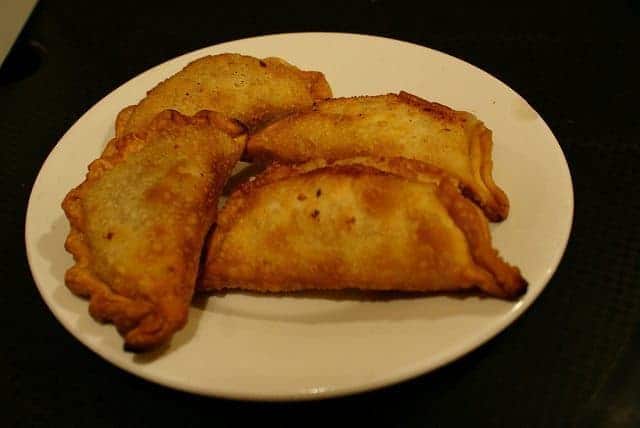Argentina Offers Much More than Steak

By Gwynnes Hogan
While descendants of Spaniards and Italians populate the majority of Argentina’s vast territory, the Andean northwest glimmers as a jewel of an exception to that rule.
Here you’ll find strong traces of indigenous heritage in the music, dance, handicrafts, and of course, the cuisine. Many write off Argentina as gigantic steaks… end of story.
In the provinces of Salta and Jujuy, however, you’ll find a delectable array of local cuisine unique to the north.
Start at the Comedors
To begin experimenting with the local flavors, start in the town’s comedors. Comedors are simple eateries, often in the front section of a family’s residence. Each little town in which you arrive reliably has a comedor or two that open for lunch and often dinner as well.
Within these homey little joints, expect simple and straight-forward meals where the plate of the day to ranges from 12-25 pesos (2-6 $US).
Foods to Try in Northern Argentina
Some smaller dishes may cost less and more elaborate ones can surpass these prices. Besides cheap and filling meals, the varying decor can be an attraction in itself. Some comedors are lined from floor to ceiling with bizarre collections of the owner’s engineering, others act as mini archaeological museums, displaying century-old artifacts uncovered from the surrounding areas.
Foot Wine
If you’re feeling adventurous, ask for the local vino patero (foot wine). While the majority of the wine production is concentrated in the Cafayate region of Salta, many homes throughout the whole region cultivate a proud handful of grapevines.
The wine you’ll find to be seriously rustic, concurrently sweet and alcoholic, and to emit a bouquet of curious and indescribable aromas. Notably better for chugging than quaffing.
Glug down a glass

What to expect once you’ve into settled into a rustic wooden chair and begun to glug down a glass of foot wine?
How about commencing with one of a handful of delectable snacks available in comedors across the region; empanadas, tamales or humitas.
Empanada may already be a familiar term, as these savory pastries are available across Argentina and Latin America in one form or another.
In northern Argentina, however, expect a flare of local ingredients stuffing the bellies of these delicate little pastries.
Like the rest of Argentina, the most common empanada is filled with beef, but if you’re lucky you’ll catch those with quinoa, humita, rabbit, or goat.
For the spice lovers, many northern empanadas are served with homemade hot sauce and are often fried instead of baked. Maybe not the best for our cholesterol levels, but oh so delicious.
Tamales and Humitas
Tamales and humitas, are two related appetizer or snack foods. Both served in a corn husk, tamales (like tamales from Mexico) are stuffed with corn paste and meat or chicken, and humitas are filled with the same corn paste and cheese. Unwrapping these dainty, edible gifts is half the fun.
When mealtime rolls around, don’t leave the north without trying cazuela de cabrito, baby goat casserole. Goat is a fickle meat, that in one moment of negligence can turn as tough as shoe leather.
When done right, however, slow-cooked for hours in a pot or a brick oven, goat meat is flaky and succulent, dissolving like butter on the palate.
Lastly, wait for a chill mountain evening to enjoy locro. This hearty stew used to be a poor man’s platter–it’s a mix of everything and anything leftover in the kitchen.
Now, however, it can be one of the priciest items on a comedor’s menu due to the lengthy preparation it demands. Locro varies regionally and from kitchen to kitchen depending on the expertise of the maker. In general, however, locro is a squash, corn, and pinto bean-based stew, slow-cooked for nearly an entire day.

It’s flavored by a variety of different cuts of meat, bones, and a boldly spiced sausage called chorizo colorado (colored or red sausage). Sprinkle aji picante (hot pepper) along the surface, and dig in. As the warm earthenware vessel its served in heats your hands, think of that Argentine granny you never had.
For more information:
Where to begin your culinary excursion to Northern Argentina? Start in Salta and from there, smaller colonial towns like Cafayate and Cachi are only a few hours away and easy to get to by bus or rental car.
While a bus may be a cheaper option, the freedom of renting a car lets you stop in all the tiniest towns to look for one of a kind comedors as well as take routes that are not trafficked by buses due to serious terrain.
In Jujuy, a popular route, is up Route 9 which will take you through a handful of precious towns like Tilcara, Purmamarca, and Humauaca. These towns are also easily accessible by bus or car also from Salta city or the capital of Jujuy.

Author Gwynne Hogan and her brother on their trip.
Gwynne Hogan at left, is a journalist and wine guide based out of Mendoza, Argentina. Currently, she’s on the road tasting glorious local specialties and drinking foot wine in Northern Argentina and Bolivia.
- These 9 U.S. National Parks Require Reservations in 2024 - April 17, 2024
- Take a Hike in Olympic National Park - April 17, 2024
- The Wild Mississippi: 2340 Miles Across Ten States - April 8, 2024




